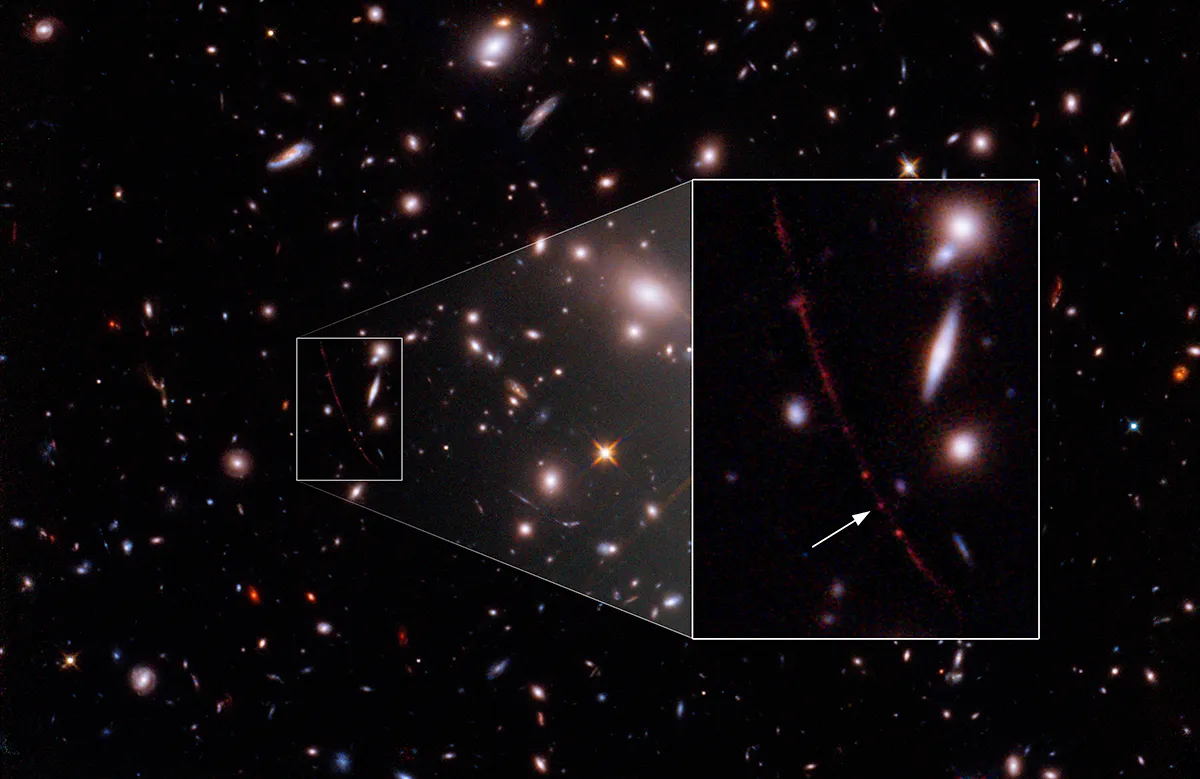The Hubble Space Telescope has observed what could be the earliest star ever seen: a star that appears to date from when the Universe was just a billion years old.
It is a potential member of the very first primordial generation of stars.
The Hubble Space Telescope was only able to spot the star – called Earendel, meaning 'morning star' in Old English – because its light was bent and magnified by a foreground galaxy cluster in a process known as gravitational lensing.

"Normally at these distances, entire galaxies look like small smudges, with the light from millions of stars blending together," says Brian Welch from the Johns Hopkins University, who led the discovery.
"The galaxy hosting this star has been magnified and distorted by gravitational lensing into a long crescent that we named the sunrise arc."
This alignment made Earendel’s light stand out from the rest of the galaxy, allowing astronomers to see it.
Fortunately, this alignment should hold for another few years, meaning the James Webb Space Telescope (JWST) can observe the star when it becomes fully operational later this year.
Though Hubble has been able to determine the star’s age and that it weighs 50 solar masses, JWST is sensitive enough to learn more about the star’s brightness, temperature and composition as well.
"Studying Earendel will be a window into an era of the Universe that we are unfamiliar with, but that led to everything we do know," says Welch.
"It’s like we’ve been reading a really interesting book and we started with the second chapter. Now we will have a chance to see how it all got started."
How JWST can help

We’ll need James Webb Space Telescope to get to the bottom of what this Earendel star actually is.
Until we get spectra of the object from our new space telescope, the possibility remains that the location of the star on the arc of light produced by the galaxy cluster lens is nothing more than a coincidence.
The team behind the paper estimates the probability of a Milky Way star just happening to end up in such a place is one in ten thousand; others are more sceptical.
They do point out that there’s no sign of the star moving relative to the background source, so it is at least not very nearby.
Whether this turns out to be the most distant star ever seen, or just an interloper, it’s whetted appetities for JWST even further.
With science observations now scheduled following deployment, it won’t be long before we learn a lot more about the early Universe Earendel seems to inhabit.
This article originally appeared in the June 2022 issue of BBC Sky at Night Magazine.

